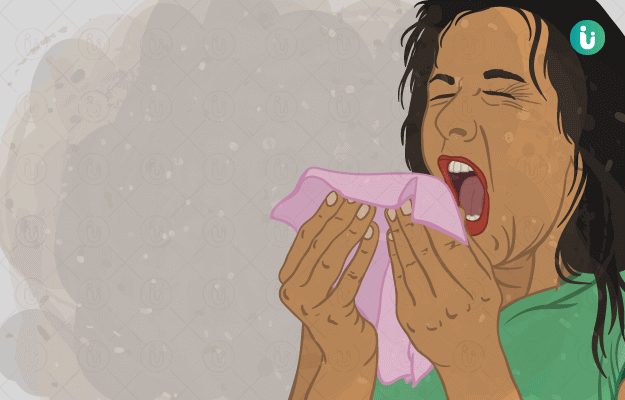What is Dust Allergy?
Dust allergy is a set of reactions, including rhinitis, conjunctivitis, eczema, and asthma, due to exposure to dust. Most commonly, the dust allergen that causes these reactions is a tiny insect that is part of the dust, which is commonly found at home. The insects are called dust mites, and they are microscopic in size and invisible to naked eye. Almost 85% of asthma patients worldwide are allergic to dust mites.
What are the main signs and symptoms?
The allergen of dust allergy grows in moist conditions at home and adapts very well to the indoor environment. You may experience one or many of the following symptoms, if you are allergic to dust:
- Sneezing
- Runny nose
- Eye irritation and watery eyes
- Skin irritation
- Stuffy nose
You may experience the following symptoms of asthma triggered by dust allergy
- Difficulty in breathing
- Wheezing sound from the chest
- Difficulty in sleeping
What are the main causes?
Dust mites feed on the dead skin cells shed off by humans, which mainly constitute the household dust. Dust mites can be classified as house dust mites and storage mites and are responsible for airway and nasal inflammation.
In the presence of an allergen like the dust mite, your body produces antibodies (IgE) as an immune response to the trigger. The response may be localised or involve a body part.
In rare cases, dust allergy can lead to anaphylactic shock, which is a fatal condition only observed due to dust mite ingestion. These dust mites reside on mattresses, carpets, and furniture. In few cases, dust mites may contaminate food. Young children, asthma patients, and pregnant women are more prone to such allergies.
How is it diagnosed and treated?
To determine the exact allergen causing the dust allergy, it is necessary to carry out diagnostic tests. The conventional testing involves a skin prick test wherein an extract of the house dust mite is used to trigger the allergy, and the allergic response is measured in terms of the diameter of the lump or redness caused at the site of the prick. If you are sensitive to skin testing, blood testing is favoured. Certain antibodies indicative of allergy can be detected in blood tests. A physical examination of the mucosal lining of the nose or redness of eye can also confirm an allergic response.
Dust allergies are easy to treat once the allergen is known. The treatment depends on the mediators in the body, such as histamine and leukotriene, which trigger an allergic response:
- Antihistaminic and mast cell inhibitors
- Leukotriene inhibitors
- Immunotherapy – it is yet another recent trend in the treatment wherein allergic sensitisation of the patient is conducted. It is long lasting and shows good results
- symptomatic treatment – Medications, such as oral steroids, might be given to control the allergy
Some preventive measures can help avoid the trigger due to dust and thus prevent the allergy.
- Warm washing of bedsheets and pillows
- Keeping the carpet covered
- Vacuum cleaning of furniture
Conclusively, dust allergies constitute 85% of allergies in the world. The best way is to avoid the allergen by avoiding dust accumulation. Symptomatic treatment allows proper care of the trigger pathway. Sensitisation using allergens is widely practised for acclimatisation to allergies.

 Doctors for Dust Allergy
Doctors for Dust Allergy  OTC Medicines for Dust Allergy
OTC Medicines for Dust Allergy



















